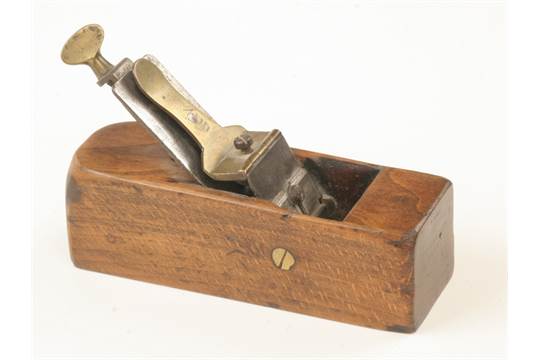For what it's worth, there is a U.S. patent from February 9, 1831 which seems to be about a type of lever cap for a wood-bodied plane. The patent was issued to Phineas Meigs of Madison, Connecticut (New Haven County). Unfortunately, it was one of the patents lost in the 1836 fire at the patent office, but has been given the patent number X6,370. Fortunately, though the original letters patent and model are lost, it was described in some detail in the publication, _The Repertory of patent Inventions ..._, London, 1833, which has been digitized by Google Books.
Meigs' invention is described as having no wedge and a single flat iron plate with pins about 3/4" from its lower end which fit into grooves in iron plates affixed to the escapement cheeks of the plane. The iron plate also has a thumbscrew near its upper end. The description goes on to state: "The cutting iron is dropped into its place, between the cap iron and the stock; when there, the thumb screw is turned, and its point bearing on the cutting iron, and fixes it in its place; the whole bearing being against the pins in the groove."
I don't know if Meigs' patent ever went into production, so doubt it influenced Fenn. But it does seem that the idea of a screw lever cap pre-dates the 1840's.
Don McConnell
Eureka Springs, AR





































